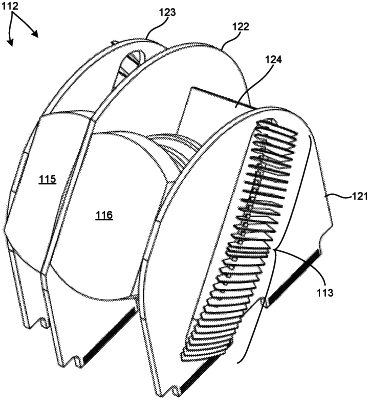| CPC G01S 7/4815 (2013.01) [G01S 7/4813 (2013.01); G01S 7/4817 (2013.01); G01S 7/4865 (2013.01); G01S 17/06 (2013.01); G01S 17/10 (2013.01); G01S 17/89 (2013.01)] | 24 Claims |

|
1. A light detection and ranging (LIDAR) device, comprising:
a rotating board arranged perpendicular to an axis of rotation;
a light emission and collection engine coupled to the rotating board to rotate about the axis of rotation, the light emission and collection engine including:
two or more electronics boards each mechanically coupled to the rotating board;
a plurality of light emitting elements mounted to a first of the two or more electronics boards and configured to rotate about the axis of rotation, each of the light emitting elements configured to emit a beam of illumination light from the LIDAR device, wherein at least one of the plurality of light emitting elements is configured to emit a beam of illumination light, from the LIDAR device into a three dimensional environment, that is parallel or nearly parallel with the axis of rotation, wherein each beam of illumination light emitted from the light emission and collection engine illuminates a respective portion of the three dimensional environment;
a plurality of light detecting elements mounted to a second of the two or more electronics boards and configured to rotate about the axis of rotation, wherein each of the plurality of light detecting elements is configured to detect a beam of return light reflected from a respective surface of the three dimensional environment and to generate a respective output signal indicative of the detected beam of return light; and
a computing system configured to determine, based on a particular one of the output signals, a distance from the LIDAR device to the surface of the three dimensional environment that reflected the return light corresponding to the particular output signal.
|